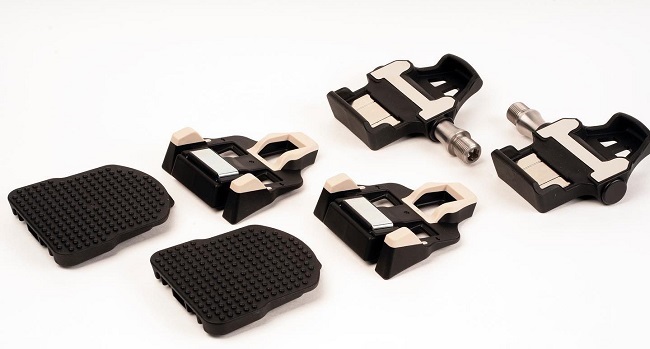Magnets instead of mechanical spring locks? Is this the future of pedal design? (Photo: Aveta)
Clipless or flats? This remains one of the fundamental questions of cycling, but flat pedals doesn’t work very well for most road cyclists.
On a mountain bike, in steep, technical terrain, many riders want to step outside or disengage from the bike because the potential momentum of the crash begins. And the flat pedals make it easy to dismount and separate from the bike, if necessary.
But the efficiency of being clipped is a big issue for road cyclists. While the complexity and maintenance issues of some clipless pedal systems can be annoying, there is no doubting their ability to transfer the power of the moving rider forward.
You can ride clipped or relaxed, with these
For years the cycling industry has toyed with the idea of magnetic
pedals. An idea seems to be brilliantly simple, but very difficult to execute.
Magnetic pedals benefit from automatic-type pedaling efficiency and have the safety of flat pedals, being theoretically easier to disengage in an emergency.
The latest magnetic pedal product is from Aveta, with its ECT system. Aveta engineers adapted a nylon composite pedal body, rotating on a sturdy stainless steel axle, with a smart magnetic interface.
A recess on the pedal body houses Aveta’s powerful magnetic strip, connecting to a metal clip on the shoe’s cleat. The designers chose a lug pattern that matches Shimano’s proven and popular 3-bolt SPD SL setup, meaning you can use your favorite cycling shoes with these magnetic pedals.
Aveta’s product development team has shown great lateral thinking, making this magnetic pedal system easily adaptable to riding in casual shoes. A rubber insert with traction thorns covers the magnet recess, converting these Aveta pedals for a commuter ride with sneakers.


